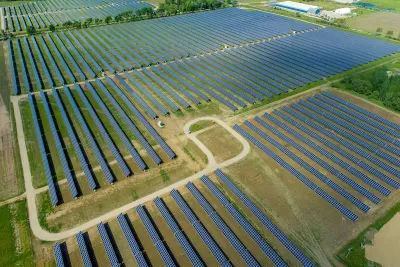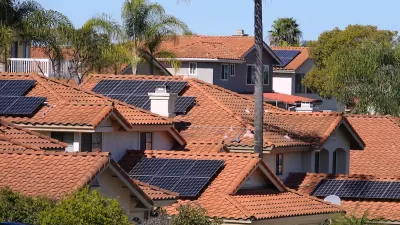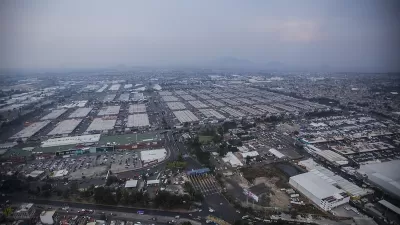Solar installations are causing soil erosion and raising concerns among farmers in some of the nation’s most productive agricultural regions.

“A renewable energy boom risks damaging some of America's richest soils in key farming states like Indiana, according to a Reuters analysis of federal, state and local data; hundreds of pages of court records; and interviews with more than 100 energy and soil scientists, agricultural economists, farmers and farmland owners, and local, state and federal lawmakers.”
As P.j. Huffstutter and Christopher Walljasper explain, in addition to shifting thousands of acres from farming to solar production, “Common solar farm construction practices, including clearing and grading large sections of land, also can lead to significant erosion and major runoff of sediment into waterways without proper remediation, according to the U.S. Environmental Protection Agency and the Justice Department.”
These practices are putting productive areas of farmland out of commission, causing concern about the future of U.S. agriculture as the demand for solar energy grows, which is projected to require up to 5 percent of each state’s land area. “By 2050, to meet the Biden Administration's decarbonization targets, the U.S. will need up to 1,570 gigawatts of electric energy capacity from solar.”
FULL STORY: As solar capacity grows, some of America's most productive farmland is at risk

Study: Maui’s Plan to Convert Vacation Rentals to Long-Term Housing Could Cause Nearly $1 Billion Economic Loss
The plan would reduce visitor accommodation by 25,% resulting in 1,900 jobs lost.

North Texas Transit Leaders Tout Benefits of TOD for Growing Region
At a summit focused on transit-oriented development, policymakers discussed how North Texas’ expanded light rail system can serve as a tool for economic growth.

Why Should We Subsidize Public Transportation?
Many public transit agencies face financial stress due to rising costs, declining fare revenue, and declining subsidies. Transit advocates must provide a strong business case for increasing public transit funding.

How to Make US Trains Faster
Changes to boarding platforms and a switch to electric trains could improve U.S. passenger rail service without the added cost of high-speed rail.

Columbia’s Revitalized ‘Loop’ Is a Hub for Local Entrepreneurs
A focus on small businesses is helping a commercial corridor in Columbia, Missouri thrive.

Invasive Insect Threatens Minnesota’s Ash Forests
The Emerald Ash Borer is a rapidly spreading invasive pest threatening Minnesota’s ash trees, and homeowners are encouraged to plant diverse replacement species, avoid moving ash firewood, and monitor for signs of infestation.
Urban Design for Planners 1: Software Tools
This six-course series explores essential urban design concepts using open source software and equips planners with the tools they need to participate fully in the urban design process.
Planning for Universal Design
Learn the tools for implementing Universal Design in planning regulations.
City of Santa Clarita
Ascent Environmental
Institute for Housing and Urban Development Studies (IHS)
City of Grandview
Harvard GSD Executive Education
Toledo-Lucas County Plan Commissions
Salt Lake City
NYU Wagner Graduate School of Public Service





























